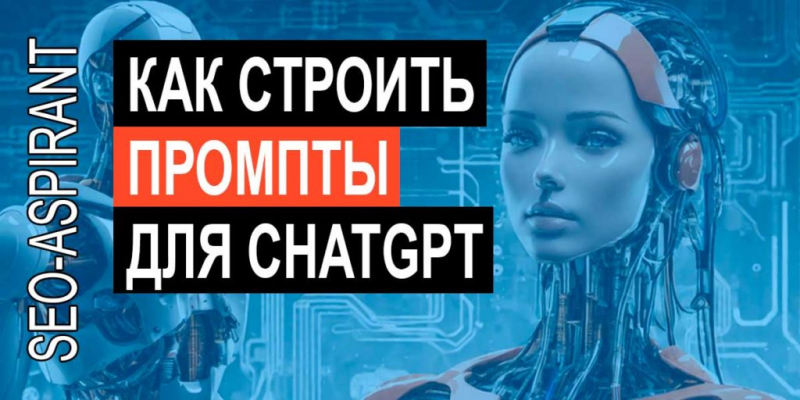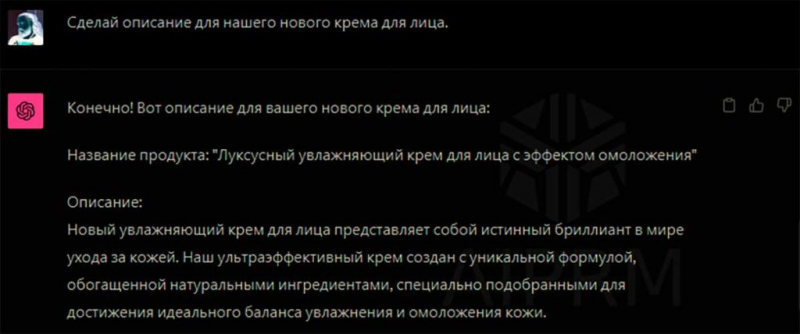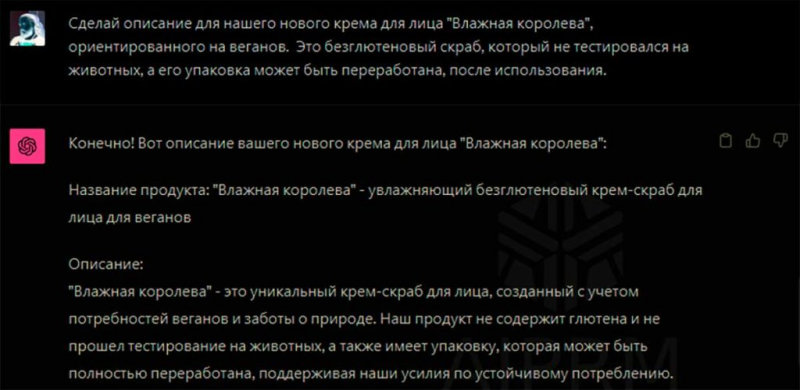The popularity of various artificial intelligence models causes a lot of misunderstandings and erroneous judgments about the opportunities that have opened up. ChatGPT is able to build full-fledged fragments of content based on fragmentary input data, explore any topics, create works of art and culture, and much more…
But this does not mean that the answer to any of your questions will be perfect and worthy of attention. Very often, AI synthesizes an absurdly long or, conversely, a short answer, the content of which has nothing to do with the original task at all. As a rule, incorrectly set initial data (prompt) is to blame for everything. If the question is formulated incorrectly, the content of the answer will be unexpected or even meaningless.

Recommendation of the month: Netology – an educational platform for teaching modern in-demand professions in the areas of Marketing, Business and Management, Design and UX, Programming, Analytics and Data Science, EdTech, B2B. Over 10 years of work, they have graduated more than 60,000 specialists.
- How to write an ideal prompt for AI
- 1. Formulate an ideal answer to your own query
- 2. Write a specific and substantive query
- 3. Add context
- 4. Provide instructions
- Style and tone
- 5. Specify
- ChatGPT quick content generation technique
How to write an ideal prompt for AI
Oddly enough, but to get an adequate and meaningful answer to the question, you must fully own the topic. In other words, an expert response will be received only if the request is made by an expert in a given area.
Try to follow the following algorithm to get the most relevant and complete data:
1. Formulate an ideal answer to your own query
Not knowing the exact answer, it is better to ask a question. Because the capabilities of artificial intelligence tools are very limited today. He may rely on incorrect or deliberately false data, which he considers authoritative and worthy of attention.
Imagine, for example, a request to ChatGPT from a marketer: “Write a marketing plan.” The result can be almost anything. Because there are no additional details in the request structuring the technical task (the exact topic of the plan, a specific business branch, the current market situation, and the like).
To achieve a high-quality result, you will have to spend time and paint the TOR, up to the number of items in each section of the plan and the details of their content.
2. Write a specific and substantive request
Artificial intelligence interprets any understatement of the request as it sees fit. And such an approach can have far-reaching and negative consequences.
Modern languages are diverse, multifaceted and contain large volumes of different words. A person can name the same object in different ways. And depending on the specific word form, the emotional color and personal attitude to the subject of discussion will differ.
From the point of view of ChatGPT, any changes in wording lead to significant distortions of the final answer.
Working with artificial intelligence tools is like a constant search for the truth, which cannot be achieved. You and I can only strive for it and hope to be as close as possible.
For example, if you need to rewrite an article, you can use the following words to set the task for the bot (and in each case the result will be different):
- rewrite;
- rethink;
- expand;
- simplify;
- modernize.
3. Add context
In the case when it comes to complex technical queries, without context, you simply will not be able to get the necessary answer. Thus, you provide ChatGPT with additional hints that can positively affect the form and content of the output data.
By providing the AI with additional context, you direct its work in the right direction, which brings us back to the first point, which assumes the need to form an ideal answer before entering a query.
Example:

And now let’s concretize the request:

Accordingly, if you go further and look at the product features that ChatGPT “invents” for you, in the first case it will be:
- intensive moisturizing;
- nutritional formula;
- rejuvenation effect;
- environmental protection;
- delicate texture and pleasant aroma;
In the second case, we get a slightly different set of advantages:
- gluten-free formula;
- effective scrubbing;
- hydration and nutrition;
- ethical production;
- environmentally sustainable packaging.
4. Provide instructions
ChatGPT without detailed instructions works like a cook without a recipe. It seems that the ingredients are correct, and the dish has nothing to do with the order.
The structure of the response is best suited as instructions. These can be headings, specific sections, terms or definitions. Specify that it is important to give concrete examples, statistical calculations, infographics or present real cases.
At the same time, it is important not only to write these instructions, but also to formulate them correctly. Ideally, the new content should contain a unique value from the point of view of the target audience. General answers have already been published in dozens or even hundreds of sources. Offer something fundamentally new and exciting.
Style and tone
As a small life hack here, you can tell the bot to write a text in the style of some existing author (or force ChatGPT to become a specialist on the topic).
You can also change the tone of the text, which will significantly affect the result.

5. Specify
You can ask ChatGPT such a prompt: “Ten ideas for a blog.” As a result, you will get a list in which one or two topics will deserve your attention. And this means that we need to go back to the formulation of the problem and redo it in such a way that at least 60% of the answer is functional in some way from the point of view of the end user.
The perfect query will not work for you the first time. Try different approaches to its formation and evaluate the final result. Only by trial and error will you be able to understand exactly how the structure of the question affects the content of the answer.
The technique of fast ChatGPT content generation
In most situations, it will be much easier to set the AI a specific role on the basis of which it will fulfill the received request. For example, it can be: a professional marketer, interviewer, designer, doctor or anyone else.
After you set a specific role, form a professional request that requires a highly qualified and authoritative response. Thus, ChatGPT will act within a strict framework, so general and inaccurate answers will be eliminated by default.
Another strategy for the formation of high-quality prompta is a logical chain. It involves creating a complex structured task for ChatGPT, which will guide the AI from one step to another. Thus, a person gets full control over the actions of ChatGPT, and the final response fully meets the requirements of the customer.

It would not be superfluous to ask the AI to explain its reasoning and conclusions at each stage. Then it will become much easier to understand exactly what changes need to be made to the initial request in order to obtain more accurate output data.
And how do you form your prompta for the ChatGPT neural network in order to get the perfect result at the output? Share your best practices in the comments!
